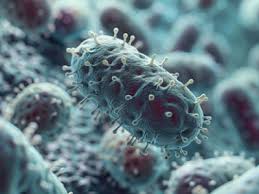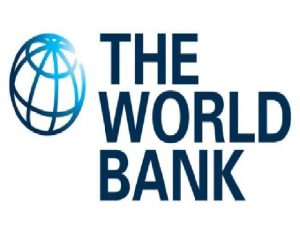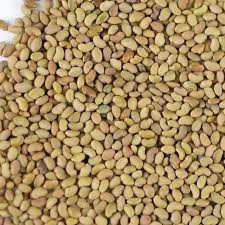Today’s Current Affairs: 2nd May 2025 for UPSC IAS exams, State PSC exams, SSC CGL, State SSC, RRB, Railways, Banking Exam & IBPS, etc
Table of Contents
S8 Tension:

The Subaru Telescope in Hawaii, using the Hyper Suprime-Cam, conducted a deep sky survey from the University of Tokyo, reported an S8 value of 0.747, consistent with prior lensing estimates.
- S8 (Sigma Eight) is a parameter used in cosmology to quantify the “clumpiness” or clustering of matter in the universe on a scale of about 26 million light-years.
- It helps determine how much matter (both visible and dark) is clustered in different cosmic regions.
- The universe began with the Big Bang ~13.8 billion years ago, starting off highly uniform, as revealed by the Cosmic Microwave Background (CMB).
- Small fluctuations in density (1 in 100,000) eventually evolved into galaxies, star clusters, and filaments, forming the lumpy structure of the present universe.
- The S8 tension refers to the mismatch in the value of S8 as obtained by:
- CMB measurements (higher value).
- Cosmic shear/lensing surveys (lower value).
- This discrepancy challenges the ΛCDM (Lambda Cold Dark Matter) model, the standard model of cosmology.
- Cosmic Microwave Background (CMB) is a sea of photons, the particles of light, present throughout the universe.
- They are left over from the Big Bang, its afterglow.
- Scientists have measured temperature changes in the CMB and studied its large-scale properties using complicated trigonometry.
- Based on these studies, cosmologists have estimated space to be expanding at around 68 kilometres per second per megaparsec ((km/s)/Mpc). That is, an object one megaparsec (3.26 million lightyears) away is moving away at 68 km/s)/Mpc.
- Cosmic shear refers to the distortion in galaxy shapes due to gravitational lensing by intervening matter.
- This lensing helps map dark matter distribution and provides an indirect method to calculate S8.
- Lower S8 from lensing suggests less clumping than expected.
Foreign Institutional Investors:

Foreign Institutional Investors (FIIs) became net buyers of Indian equities for the first time in four months in April 2025, registering an inflow of ₹4,223 crore.
- FIIs are a subset of Foreign Portfolio Investors (FPIs), comprising large institutional investors like mutual funds, pension funds, insurance companies, and hedge funds.
- FIIs typically adopt a strategic and structured investment approach in foreign financial markets, offering long-term capital inflows to emerging economies.
- However, rapid FII outflows can destabilize domestic markets, making regulatory oversight
- Regulatory Framework Governing FIIs in India
- FIIs are regulated by:
- The Foreign Exchange Management Act (FEMA), 1999
- SEBI (Foreign Portfolio Investors) Regulations
- The Reserve Bank of India (RBI) monitors sectoral investment ceilings
- FIIs can invest up to 10% in any single Indian company, subject to a cumulative FII/NRI/PIO limit of 24%.
- FII entities now include university funds, charitable endowments, and trusts with a minimum five-year operational track record.
- FIIs are permitted to invest in unlisted securities and use their proprietary funds.
- A major reason cited for the increased FII participation is the softening of the U.S. Dollar Index, which has declined from 104–105 to nearly 99–100, improving the relative strength of the Indian rupee.
- The Reserve Bank of India’s accommodative stance and macro-stability have encouraged investments, particularly in banking, financial services, and insurance (BFSI)
- Meanwhile, FIIs reduced their exposure to the IT sector due to concerns about a potential U.S. recession and its impact on tech earnings.
Near-Surface Shear Layer:

An international team of solar physicists, including scientists from the Indian Institute of Astrophysics (IIA), has mapped dynamic plasma currents in the Sun’s Near-Surface Shear Layer (NSSL), revealing patterns that correlate with the Sun’s 11-year magnetic activity (sunspot) cycle.
- The Near-Surface Shear Layer (NSSL) is a crucial region located just beneath the Sun’s visible surface, extending to a depth of about 35,000 km.
- In the NSSL, the Sun’s angular velocity (rotation speed) decreases rapidly with radius, creating a rotational shear that varies with depth, latitude, and solar magnetic activity.
- The study revealed surface plasma flows converge towards sunspot latitudes but reverse midway in the NSSL and flow outward, forming large circulation cells.
- These flows are shaped by the Sun’s rotation and the Coriolis force, which also influences Earth’s hurricanes. This connection helps explain how the Sun’s spin behaviour varies with depth.
- Despite being dynamic, these localised flows do not drive the Sun’s large-scale zonal flows, known as torsional oscillations, implying the presence of deeper unknown forces in the Sun’s interior.
WAVES 2025:

Finalists from 11 cities were selected through months of regional contests and will participate in the WAM! national finale at WAVES 2025.
- WAM! (WAVES Anime & Manga Contest) is India’s first national initiative focused on discovering, nurturing, and promoting original Indian Intellectual Properties (IPs) in anime, manga, webtoons, and cosplay.
- It is being organised by the Ministry of Information and Broadcasting in collaboration with the Media & Entertainment Association of India (MEAI).
- The initiative will culminate in the WAVES 2025 national finale, which will be held from May 1–4, 2025 at the Jio World Convention Centre, Mumbai.
- WAVES 2025 (World Audio-Visual & Entertainment Summit) 2025 is a pioneering event designed to promote India’s strength in the AVGC-XR sector — Animation, Visual Effects, Gaming, Comics, and Extended Reality.
- WAVES is being hosted under the central theme: “Create in India, Create for the World”, emphasizing India’s ambition to become a global creative hub.
- The summit brings together global leaders, innovators, studios, and creators, providing a collaborative platform for India’s media and entertainment economy.
- WAVES features the Create in India Challenges (CIC) — an initiative that received over 1 lakh registrations, including 1,100 international participants, reflecting global interest in India’s creative ecosystem.
- The summit includes discussions and showcases on Broadcasting, Films, Print Media, Radio, Digital Media, Advertising, Social Media Platforms, and Generative AI.
- It also highlights technological advancements in Augmented Reality (AR), Virtual Reality (VR), and Extended Reality (XR).
Rabies : A Study

A six-year-old girl who was bitten by a stray dog died of rabies recently despite receiving preventive vaccination in Kerala’s Malappuram district.
- Rabies is a deadly zoonotic disease caused by the Rabies virus (RABV) that attacks the nervous system.
- RABV is an RNA virus of the rhabdovirus family that can affect the body in one of two ways.
- It can enter the peripheral nervous system directly and migrate to the brain.
- It can also replicate within muscle tissue, where it is safe from the host’s immune system. From here, it enters the nervous system through the neuromuscular junctions.
- Once inside the nervous system, the virus produces acute inflammation of the brain.
- Transmission: The virus spreads through the saliva of infected animals.
- Infected animals can spread the virus by biting another animal or a person.
- In rare cases, rabies can be spread when infected saliva gets into an open wound or the mucous membranes, such as the mouth or eyes.
- In up to 99% of the human rabies cases, dogs are responsible for virus transmission.
- The incubation period for rabies is typically 2–3 months but may vary from one week to one year, depending on factors such as the location of virus entry and the viral load.
- Initial symptoms of rabies include generic signs like fever, pain, and unusual or unexplained tingling, pricking, or burning sensations at the wound site.
- As the virus moves to the central nervous system, progressive and fatal inflammation of the brain and spinal cord
- Once the virus infects the central nervous system and clinical symptoms appear, rabies is fatal in 100% of cases.
- Rabies is most common in rural parts of Asia and Africa, though it’s found on all continents except Antarctica.
- It is a vaccine-preventable disease.
- Vaccinating dogs, including puppies, is the most cost-effective strategy for preventing rabies in people because it stops the transmission at its source.
- Treatment:
- Medical care following a rabies exposure is called post-exposure prophylaxis, or PEP.
- PEP includes wound care, a dose of Human Rabies Immune Globulin (HRIG), and a series of four or five rabies vaccines, which must be administered as soon as possible after exposure.
- This care is vital to prevent the disease from developing. It is nearly 100% effective if administered promptly.
Phthalates:

A recent study found that a daily exposure to phthalates is linked to 3.5 lakh, or 13 percent, of deaths in the world due to heart disease in 2018 among people aged between 55 and 65 years of age.
- Phthalates are a family of chemical compounds primarily used in plastic products (most commonly in the specific type of plastic named polyvinyl chloride, also known as
- They are the most commonly used plasticisers in the world and are categorised as high and low phthalates depending on the molecular weight.
- They may be blended as an additive into special plastics in order to increase the performance of the material.
- They are used to soften plastics, making them more flexible or more durable.
- They are sometimes used to decrease the melting temperature of plastics to aid the moulding process.
- They are used in hundreds of products, including vinyl flooring, adhesives, detergents, lubricating oils, automotive plastics, plastic clothes (raincoats), and personal-care products (soaps, shampoos, hairsprays, and nail polishes).
- They are used widely in polyvinyl chloride plastics, which are used to make products such as plastic packaging film and sheets, garden hoses, inflatable toys, blood storage containers, medical tubing, and some children’s toys.
- They also have a wide application in screen print, heat transfer inks, and plastisol inks.
- Since phthalates are not chemically bound to the polymer molecule, they can be released from products or dissolve when in contact with liquids or fats.
- As a result, they may migrate out of a material, resulting in exposure to humans and the environment.
- Some phthalates are endocrine disruptors, a class of potent chemicals that interfere with our hormone systems.
- Some of the health harms associated with phthalates are changes to fertility, early puberty and risk of low birth weight, obesity, diabetes, impacts to the immune system, cardiovascular and respiratory problems, some cancers, and neurological and behavioral problems.
Special 301 Report:

India has yet again been placed on the ‘priority watch’ list of the US Trade Representative (USTR) office’s Special 301 Report on Intellectual Property Rights
- It is an annual report by the United States Trade Representative (USTR) under the Trade Act of 1974.
- It identifies countries that are considered by the US as not providing adequate and effective protection of Intellectual Property Rights (IPRs) or fair and equitable market access to IP rights holders from the US.
- The report has been issued every year since 1989.
- It designates countries as “priority foreign country”, “priority watch country”, and “watch list country”.
- Designation as a priority foreign country initiates an investigation and possible application of sanctions on the foreign country, while designation on a Priority Watchlist suggests serious IPR deficiencies that require greater US attention.
- Other countries that are considered to have serious IPR deficiencies but are not designated for greater US attention are placed on a Watchlist.
- The report includes both developed and developing countries.
World Bank’s Poverty & Equity Brief Report:

The World Bank’s Spring 2025 Poverty and Equity Brief report praised India for lifting 171 million people out of extreme poverty from 2011-12 to 2022-23, lowering the extreme poverty rate from 16.2% to 2.3%.
- This highlights India’s dedication to inclusive development through welfare schemes, and improved access to essential services.
Highlights:
- Rural and Urban Poverty Reduction: Extreme poverty in India fell significantly, from 18.4% to 2.8% in rural areas and from 10.7% to 1.1% in urban areas between 2011-12 and 2022-23.
- In 2011-12, the five most populous states- Uttar Pradesh, Maharashtra, Bihar, West Bengal, and Madhya Pradesh accounted for 65% of India’s extreme poor. By 2022-23, these states contributed to two-thirds of the overall decline in extreme poverty.
- The report highlighted a decline in non-monetary poverty, with India’s Multidimensional Poverty Index (MPI) dropping from 53.8% in 2005-06 to 16.4% in 2019-21.
- By 2022-23, the World Bank’s Multidimensional Poverty Measure stood at 15.5%, indicating continued improvements in living conditions.
- India’s consumption-based Gini index improved from 28.8 in 2011-12 to 25.5 in 2022-23, indicating a reduction in income inequality.
- Employment rates, especially for women, are rising, and urban unemployment is at its lowest since 2017-18. However, only 23% of non-farm paid jobs are formal.
- Despite 31% female employment, there are still significant gender gaps, with 234 million more men in paid work.
- Progress at Lower-Middle-Income Level: At the USD 3.65 per day poverty line, India’s poverty rate dropped from 61.8% to 28.1%, lifting 378 million people out of poverty.
- This reflects that the benefits of economic growth have reached the lower-middle-income groups in both rural and urban areas.
Alfalfa Seed:

The government is preparing to restrict the entry of genetically modified (GM) alfalfa (lucerne) fodder seed into the country, as the US urges India to lower import duties on the crop.
- The Indian government is empowered to regulate the entry of genetically modified (GM) organisms under the Environment (Protection) Act, 1986.
- Alfalfa(Medicago sativa) derives its name from the Arabic word al-fasfasa, which means the best forage.
- It is a highly nutritious plant packed with vitamins (A, C, K, B vitamins), minerals (calcium, magnesium, potassium), plant-based proteins, fiber, and antioxidants. It is widely used as animal feed and is also consumed by humans for its health benefits
- Being a legume, it has the ability to fix nitrogen from the atmosphere into the soil.
- The US is the world’s largest alfalfa producer, where it is grown mostly under rainfed conditions.
Centre Clears Greenfield NH-6 Corridor Linking Meghalaya and Assam:
The Shillong–Silchar Greenfield Corridor project is a strategic infrastructure initiative that aims to enhance connectivity in the Northeast, especially between Meghalaya and Assam. This 4-lane access-controlled corridor spans 166.80 km, mostly through hilly terrain, and is expected to boost logistics, tourism, employment, and inter-state economic integration. It also aligns with PM Gati Shakti National Master Plan and Atmanirbhar Bharat.
Liverpool Crowned 2024–25 Premier League Champions:
The 2024–25 Premier League season saw a dominant performance by Liverpool Football Club under the new management of Arne Slot, who replaced legendary manager Jürgen Klopp. Liverpool clinched the title with 82 points from 34 games, leading by 15 points over second-placed Arsenal. The Reds sealed the triumph with a thumping 5-1 win against Tottenham Hotspur, featuring goals from key players like Mohamed Salah, Luis Diaz, and Cody Gakpo, alongside an own goal from Destiny Udogie.Liverpool have been crowned Premier League Champions for the 2024–25 season after a stunning 5-1 win over Tottenham Hotspur at Anfield Stadium. With this victory, they have lifted their 20th top-division title, equaling Manchester United’s record in English football.
Gujarat Statehood Day:
Gujarat Formation Day, also known as Gujarat Sthapana Divas, is celebrated annually on May 1st to commemorate the establishment of the state of Gujarat in 1960, following the bifurcation of the Bombay State on linguistic lines. The creation of Gujarat, fueled by the Mahagujarat Movement, marked the recognition of the Gujarati-speaking population’s cultural and administrative identity. The day is observed with parades, flag hoisting, cultural programs, and developmental project inaugurations across the state.
International Jazz Day 2025:
Every year on April 30, the world comes together to celebrate International Jazz Day, a UNESCO-led initiative that recognises jazz music as more than just an art form — it is a global language of peace, diversity, dialogue, and mutual understanding. Launched with the help of jazz legend Herbie Hancock, this day unites musicians and communities across the world in workshops, concerts, and discussions.
India Post Partners with SBI Mutual Fund to Streamline KYC:
To simplify and expand mutual fund investments across India, particularly in remote regions, the Department of Posts (DoP) and SBI Funds Management Limited (SBIFM) have partnered to offer door-to-door KYC verification services. This collaboration ensures secure, accurate, and convenient onboarding of mutual fund investors, leveraging India Post’s vast postal networkIndia Post has signed a Memorandum of Understanding (MoU) with SBI Mutual Fund to offer doorstep KYC verification services across India, especially targeting rural and underserved regions. This initiative promotes financial inclusion under the Jan Nivesh and Digital India programs.
CSR Spending Witnessed 16% Rise in FY 23-2024:
CSR (Corporate Social Responsibility) spending by listed Indian companies has surged by 16% in FY 2023-24. This increase follows a period of stagnant expenditure and aligns with a rise in the average net profits of these firms. The CSR law, in effect since 2014, requires eligible companies to invest in social initiatives like education, healthcare, and environmental sustainability. However, calls have now emerged to revisit the thresholds for mandatory CSR compliance in light of the doubling of corporate profits since the law’s inception.
Supreme Court Suggests Minimum Vote Requirement for Unopposed Election Wins:
The Supreme Court has questioned the validity of declaring a sole candidate elected without public voting. It emphasized that even in unopposed scenarios, a basic level of voter approval—say, 10% or 15% of total votes—should be mandated. This discussion stems from a petition by the Vidhi Centre for Legal Policy, which argues that denying the NOTA (None of the Above) option violates the right to expression under Article 19(1)(a). The Supreme Court of India has suggested that candidates declared elected unopposed in elections must secure a minimum percentage of votes to validate their win. This suggestion came during a hearing on the constitutionality of Section 53(2) of the Representation of the People Act, 1951, which currently allows unopposed wins without actual polling
RBI Initiate to Use PRAVAAH portal from 1st May to All Stakeholders:
To streamline, digitize, and enhance transparency in the regulatory approval process, the RBI had introduced the PRAVAAH portal in May 2024. Now, to improve compliance and efficiency, the RBI has made it mandatory for all regulated entities to use this online platform for all applications, effective May 1, 2025. The move is part of RBI’s broader push toward digital governance in the financial sector.The Reserve Bank of India (RBI) has issued a mandate requiring all banks, financial institutions, and regulated entities to compulsorily submit applications for licenses, authorizations, and approvals through the PRAVAAH portal from May 1, 2025.
Kirthiga Reddy Launches ‘AI Kiran’ to Empower Indian Women in Artificial Intelligence:
To address the underrepresentation of women in GenAI roles, Kirthiga Reddy, the first employee and ex-Managing Director of Facebook India (now Meta), has announced a women-centric AI platform called AI Kiran. This initiative seeks to connect, mentor, fund, and certify Indian women in AI, with a focus on impactful sectors like healthcare, education, and sustainability. The platform aims to place Indian women at the heart of the global AI revolution.Kirthiga Reddy, former Meta India head and co-founder of Verix, has launched AI Kiran, a platform aimed at empowering Indian women in AI, with support from the Indian government and global organisations, on April 21, 2025, aligning with UN World Creativity and Innovation Day.
IndusInd Bank CEO Sumant Kathpalia Resigns Amid ₹2,000 Crore Derivatives Accounting Lapse:
Sumant Kathpalia, the Managing Director and Chief Executive Officer (MD & CEO) of IndusInd Bank, has resigned with immediate effect, taking moral responsibility for severe accounting discrepancies in the bank’s derivatives portfolio. The lapses, which were uncovered during an internal investigation and confirmed by external audit firms, have led to a cumulative loss of nearly ₹2,000 crore.
Dadasaheb Phalke Birth Anniversary:
On April 30, 2025, India celebrates the 155th birth anniversary of Dhundiraj Govind Phalke, famously known as Dadasaheb Phalke. Hailed as the Father of Indian Cinema, Phalke’s pioneering journey began in an era when filmmaking was virtually unknown in India. Through his vision, persistence, and courage, he created India’s first full-length feature film—Raja Harishchandra (1913)—and laid the foundation for one of the world’s largest film industries.
Amazon Launched Satellite for Project Kuiper Broadband Internet:
Amazon has initiated the deployment of its ambitious $10 billion Project Kuiper, launching its first batch of 27 satellites aimed at providing global broadband connectivity, especially to remote and rural areas. This launch marks the beginning of Amazon’s challenge to SpaceX’s Starlink, which already has over 8,000 satellites in orbit and millions of users worldwide.Amazon successfully launched the first 27 satellites of its Project Kuiper broadband internet constellation from Cape Canaveral, Florida, marking the company’s official entry into the satellite internet race against SpaceX’s Starlink.
RBI Directs Banks to Ensure Regular Dispensing of ₹100 and ₹200 Notes:
The Reserve Bank of India (RBI) has mandated that banks and White Label ATM Operators (WLAOs) ensure that ATMs dispense ₹100 and ₹200 denomination banknotes on a regular basis. This directive is set to roll out in phases, with specific deadlines for implementation.The RBI’s latest directive addresses a common public concern: the availability of smaller denomination notes in ATMs. By ensuring that ₹100 and ₹200 notes are available regularly, the RBI aims to make it more convenient for people to access the most commonly used denominations.
RBI Launches 3 Key Surveys for Monetary Policy Input:
To fine-tune India’s monetary policy based on real-time household sentiments, the RBI has initiated three surveys: the Inflation Expectations Survey of Households (IESH), the Urban Consumer Confidence Survey (UCCS), and the Rural Consumer Confidence Survey (RCCS). These tools are vital for assessing inflation trends, consumer confidence, and economic sentiment in both urban and rural India, helping the central bank make informed decisions. The Reserve Bank of India (RBI) launched three important consumer surveys aimed at gathering public perception on inflation, employment, income, and overall economic confidence. The data from these surveys will serve as crucial inputs for the RBI’s upcoming Monetary Policy Committee (MPC) meeting scheduled from June 4–6, 2025.
Ex-RAW Chief Alok Joshi Appointed Head of Revamped National Security Board:
Amid rising tensions with Pakistan following the Pahalgam terror attack, India has overhauled its National Security Advisory Board (NSAB). The former chief of Research and Analysis Wing (R&AW), Alok Joshi, has been appointed as the new Chairman of the NSAB. This restructuring, driven by Prime Minister Narendra Modi, aims to enhance the nation’s security framework, with a focus on addressing the recent wave of terror attacks and bolstering India’s security response.This development comes in the aftermath of the Pahalgam terror attack and heightened tensions with Pakistan. The Indian government has restructured the National Security Advisory Board (NSAB) to strengthen national security and implement a broader recalibration of security strategies.
Right to Digital Access: Supreme Court Directs Changes in KYC Process for Disabled Persons
The Supreme Court’s ruling to calls for the revision of digital KYC norms to accommodate individuals with disabilities, particularly those with visual disabilities and facial disfigurement (such as acid attack survivors). The case arose from two writ petitions that sought to make the digital KYC process more accessible. The court emphasized the obligation of the state to create a digitally inclusive ecosystem that accommodates all citizens, particularly marginalized groups.Supreme Court of India directed the Centre and public entities like the RBI to revise digital KYC (Know Your Customer) norms to make them more inclusive for persons with disabilities. The court emphasized that the right to digital access is integral to the right to life and liberty under Article 21 of the Indian Constitution.
Nvidia’s $500 Billion AI Push: U.S. to Become Chip Manufacturing Hub:
Nvidia CEO Jensen Huang unveiled a $500 billion plan to establish AI chip manufacturing within the United States. This marks a major shift from the company’s traditional reliance on Asian manufacturing, especially Taiwan. The plan, revealed during a White House event, underscores the growing importance of AI infrastructure in national development and the global tech race.Nvidia has announced a historic $500 billion investment in the United States to build AI chip manufacturing infrastructure, marking the company’s first domestic production move. The decision supports AI innovation, reduces dependence on foreign supply chains, and aligns with the U.S. government’s push for technological self-reliance.
World Tuna Day 2025:
World Tuna Day 2025 serves as a powerful reminder of the critical need to preserve tuna populations through sustainable fishing practices. As nations continue to rely on tuna for food, economy, and cultural heritage, the observance promotes global cooperation to protect marine life.The day is globally recognized to promote awareness about the importance of sustainable tuna fishing and marine conservation.
EC Launches Capacity-Building Training for Grassroot Poll Officials:
The Election Commission of India began a two-day capacity-building training programme in New Delhi for 369 grassroot-level election officials from Bihar, Uttar Pradesh, Delhi, and Haryana. The initiative is a crucial step in ensuring the accuracy of electoral rolls and enhancing poll preparedness for the upcoming state assembly elections, particularly in Bihar.The Election Commission of India (ECI) has initiated a two-day training programme for Electoral Registration Officers (EROs) and Booth Level Officers (BLOs) from multiple states, including Bihar, as part of preparations for the forthcoming Assembly elections.
Nepal to Restrict Mt. Everest Permits: New Law to Limit Access
Nepal is set to introduce a new draft law that aims to limit access to Mount Everest to experienced climbers. The new regulations, currently in draft form, would require climbers to have previously scaled a peak above 7,000 meters before attempting Everest. This move is in response to concerns about the increasing number of deaths, overcrowding, and environmental degradation at the world’s highest peak.




